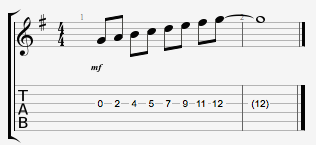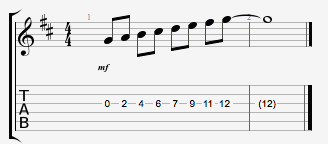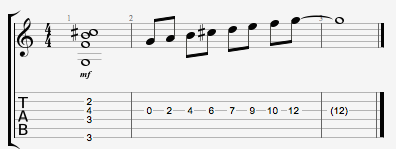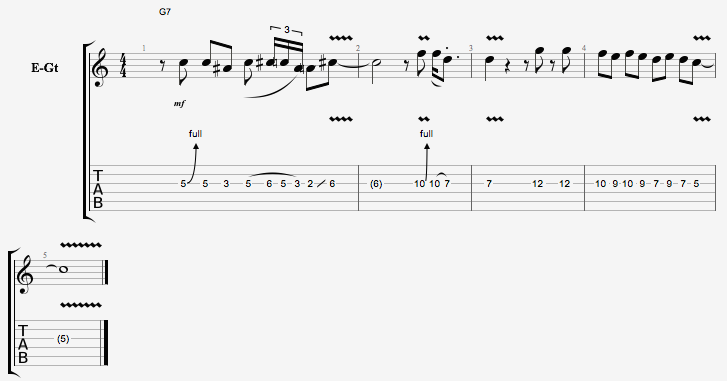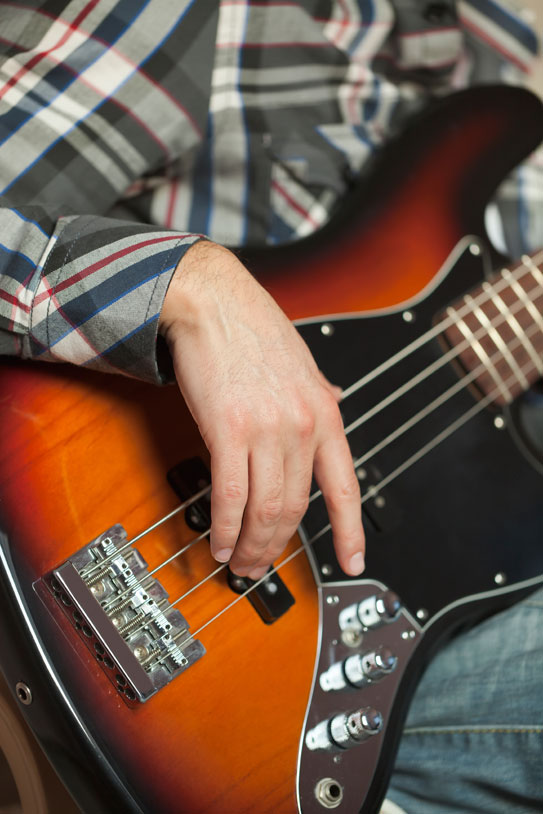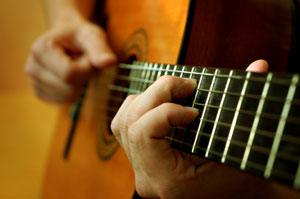
Blog
Jul 16 2015 |
One String Scale Practice Pt 2By: Scott Gilliam Posted in: Rock Guitar Lessons This is my second installment on the subject of practicing on one string. The first lesson showed a few examples using the Minor Pentatonic, Harmonic Minor and the Mixolydian scale. As a quick recap, one of the advantages of single string studies is that it doesn't permit you to use familiar fingerings and patterns. The intervals are your guide and you are prompted to think of the notes in a scale and/or a particular key. To take this idea further, lets look at practicing various modes on a single string. Utilizing this method is a great way to reinforce what you already know, in addition to gaining some new insights. Let' say you want to address the major modes derived from the Major Scale, this would be Ionian, Lydian and to some people's way of thinking and hearing - Mixolydian.
Ex.1 illustrates the G major scale (Ionian Mode) on the 3rd stg and the notes are G,A,B,C,D,E,F#. Take note of the construction of the scale in terms of steps - W,W,H,W,W,W,H. W represents a whole step and H represents a half step. If you have a looper you could play a G chord to hear the sound of the scale, or lay down a groove to start improvising over and come up with some melodic phrases.
Ex.2 Now let's switch to the Lydian mode which is the 4th degree of the D major scale. This means that our previous scale will only be altered by one note, the C becomes C#. This represents the #4/#11 and it is the characteristic "sound" of Lydian and it's what differentiates it from Ionian. Notice the B and C# are now a full step apart, focus on targeting the C# to bring out the Lydian flavor and really hear the juxtaposition between the two scales. It is drastically different!
Let's step out of the major scale modes and explore a very useful sound that is derived from the melodic minor scale. Lydian Dominant is the 4th degree of Melodic Minor and it is well suited for a Dom 7th chord with a #11 a.k.a. b5. The notes for G Lydian Dominant are G,A,B,C#,D,E,F. We have now altered the previous Lydian scale by one note. The F# is now F, because of this I suggest using G7#11 as a chord to relate this sound to.
Ex.3 shows a voicing for G7#11 and the notes of the Lydian Dom scale.
Ex.4 is a phrase using this scale to illustrate how we can make a musical statement on one string at a time. This is a short ii-V-I in the key of C. I used the Lydian Dominant scale over the ii chord - Dm. As a side note: G Lydian Dominant is also D Melodic Min, this scale works over both chords. Over the G7, I used a passing tone to land on E, the third of the C chord, on the and of the fourth beat. Arriving at your chord of resolution early is known as anticipation, and it is a device constantly used in jazz.
Ex.5 is a summation of many of the sounds used in the above examples. I have a four bar improvisation that can be used over a vamp in G7. I included some bluesy devices such as bends, vibrato, hammer ons, pull offs, etc. These things bring the music to life and give it feel.
Hopefully these one string studies have given you some ideas in which to practice. I will end this lesson with a quote from the legendary jazz guitarist Barney Kessel. He sums up the importance of practicing scales and exercises. It is necessary so that when you make music you have a well in which to draw from. The most important thing is to make music!
"Playing scales is like a boxer skipping rope or punching a bag. It's not the thing in itself; it's preparatory to the activity."
--- Barney Kessel
|




